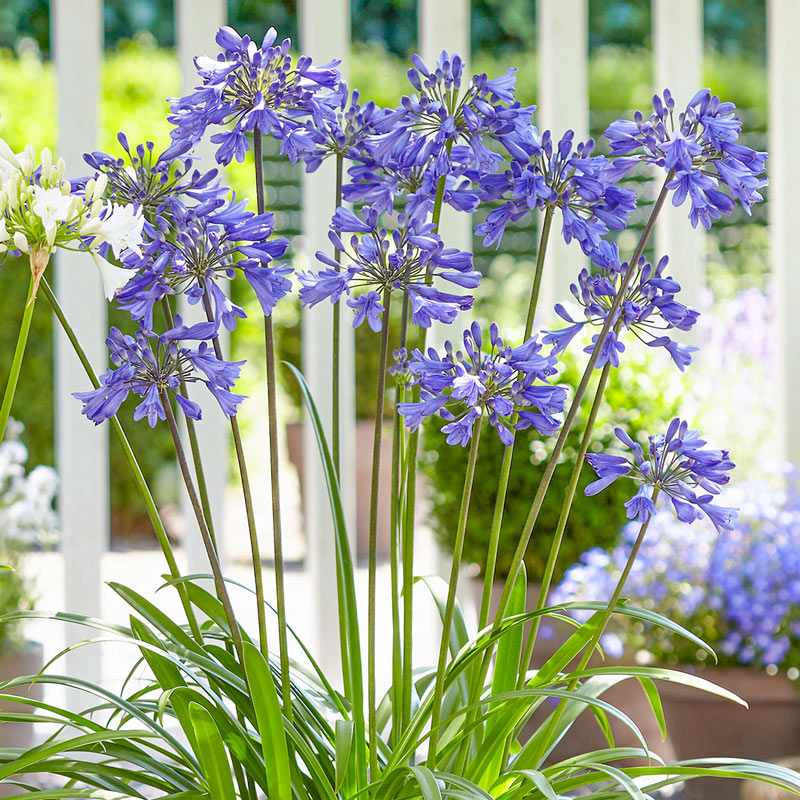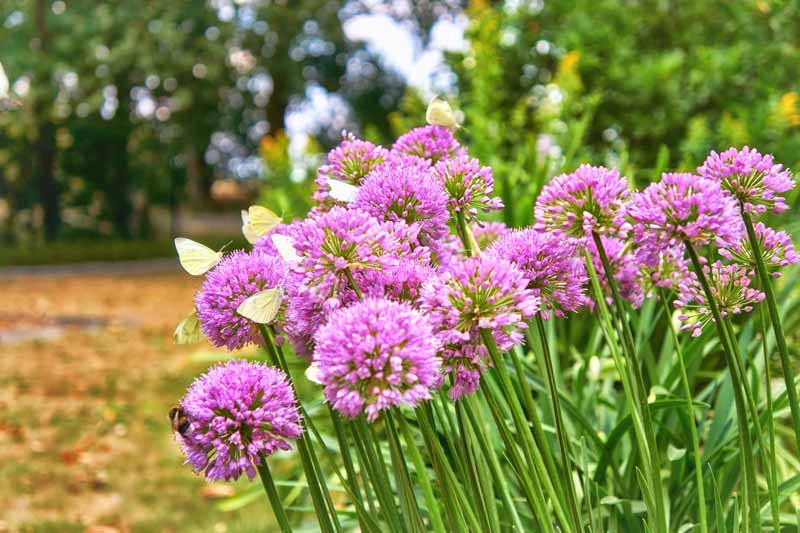Agapanthus Varieties: Picking the Best for Your Landscape
Agapanthus Varieties: Picking the Best for Your Landscape
Blog Article
Understanding the Art of Agapanthus Treatment: Vital Steps for Healthy And Balanced Development and Vivid Blossoms
In the world of horticulture, the growing of agapanthus stands as a fulfilling undertaking for those that seek to nurture these stylish flowering plants. From choosing the best variety to understanding pruning methods, the journey in the direction of cultivating prospering agapanthus plants is diverse and holds the essential to opening the complete potential of these agricultural gems.

Choosing the Right Agapanthus Range

When selecting the appropriate Agapanthus variety for your garden, think about aspects such as environment viability, bloom shade, and development behavior. Agapanthus, commonly called Lily of the Nile or African lily, can be found in a range of shades varying from shades of blue and purple to white. Choose a flower color that matches your existing yard combination to develop a harmonious landscape. In addition, think about the climate in your area to make certain the Agapanthus range you choose can prosper in your details conditions. Some varieties are much more tolerant of cool temperatures, while others favor warmer climates. Comprehending the development practice of various Agapanthus ranges is vital for correct positioning within your garden. Some selections have a clumping growth behavior, ideal for containers or boundaries, while others have a more dispersing nature, appropriate for ground cover or mass plantings. By carefully assessing these variables, you can select the ideal Agapanthus selection to improve the beauty of your garden.
Perfect Planting Problems
Considering the optimal environmental requirements is crucial for successful Agapanthus growing. Agapanthus prospers in well-draining dirt with a slightly acidic to neutral pH degree. When growing, select a place that obtains complete sunlight to partial shade. In hotter climates, supplying some mid-day color can avoid scorching of the fallen leaves. Agapanthus plants are sensitive to chilly temperatures and must be secured from frost throughout winter season.
To make sure healthy growth and vibrant blossoms, plant Agapanthus light bulbs at a deepness of regarding 2-4 inches and area them 8-12 inches apart. Including raw material, such as garden compost, to the dirt can boost water drainage and fertility, advertising durable root development. Mulching around the base of the plants helps maintain moisture and suppresses weed growth. Routine watering is critical, particularly during the growing period, to maintain the soil continually damp yet not saturated.
Watering and Feeding Tips
Maintaining proper wetness degrees and giving necessary nutrients are crucial aspects in the treatment regimen for Agapanthus plants. When it comes to sprinkling Agapanthus, it is crucial to strike an equilibrium. These plants like continually moist soil however are at risk to root rot if overwatered.
Feeding Agapanthus is vital for advertising healthy and balanced development and respected blooms. Apply a balanced fertilizer, such as a 10-10-10 formula, in the early springtime as brand-new growth arises. By complying with these watering and feeding tips, you can ensure your Agapanthus plants thrive and create lively, lasting flowers.
Pruning Methods for Agapanthus
Trimming Agapanthus plants at the ideal times and with proper strategies is critical for keeping their health and wellness and promoting optimum development and flowering. The optimal time to trim Agapanthus is in late winter season or early spring before brand-new growth arises.
Deadheading spent flowers can also redirect the plant's energy into producing even more flowers rather than setting seeds. If you want to accumulate seeds for breeding, leave some blossoms to dry and mature on the plant.
Keep in mind to use clean, sharp devices to make accurate cuts and decrease the danger of introducing diseases. Agapanthus. read this Routine trimming will certainly aid keep your Agapanthus looking healthy and neat while ensuring a bountiful display of beautiful blossoms
Managing Usual Insects and Diseases
After guaranteeing correct pruning methods for Agapanthus, it is essential to deal with usual parasites and diseases that can impact the health and vitality of these plants. One common bug that affects Agapanthus is the Agapanthus gall midget.
Furthermore, Agapanthus plants can experience from root rot if they are grown in badly draining pipes soil. By being watchful and taking prompt activity against illness and bugs, you can aid your Agapanthus plants prosper and produce lively blossoms. Agapanthus.

Verdict
In verdict, mastering the art of agapanthus treatment involves choosing the More Info right range, providing optimal planting conditions, proper watering and feeding, appropriate pruning strategies, and dealing with common bugs and conditions. By adhering to these crucial actions, you can make sure healthy and balanced growth and vibrant flowers for your agapanthus plants. Bear in mind to routinely monitor and maintain your plants to advertise their general wellness and durability.
To ensure healthy and balanced growth and vibrant flowers, plant Agapanthus bulbs at a depth of about 2-4 inches and room them 8-12 inches apart. By following these watering and fertilizing ideas, you can ensure your Agapanthus plants grow and create dynamic, lasting blossoms.
One typical insect that influences Agapanthus is the Agapanthus gall midget. In addition, Agapanthus plants can suffer from origin rot if they are grown in poorly draining dirt. By adhering to these vital steps, you find out here now can make certain healthy development and lively flowers for your agapanthus plants.
Report this page